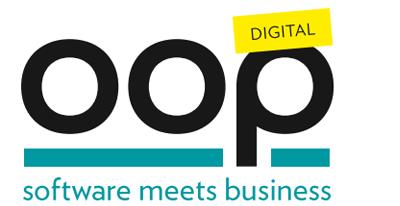
Conference Program
Please note:
On this site, there is only displayed the English speaking sessions of the OOP 2022 Digital. You can find all conference sessions, including the German speaking ones, here.
The times given in the conference program of OOP 2022 Digital correspond to Central European Time (CET).
By clicking on "EVENT MERKEN" within the lecture descriptions you can arrange your own schedule. You can view your schedule at any time using the icon in the upper right corner.
Track: Signature Track: The Time is Now!
- Mittwoch
02.02. - Donnerstag
03.02.
Chaos engineering, popularised by Netflix, is an approach to building scalable, resilient systems through destructive experiments, but what other impacts does it have? How can adopting chaos engineering change organisational culture? This talk explores the parallels between modern distributed architectures and the unpredictable challenges of the modern world, and how approaches like chaos engineering help organisations deal with both.
We will deep dive into the practices needed to make chaos…
Digitalization has been changing existing industry B2B businesses, digitalization business models arrived and the Digitalization solutions need to be developed to support this. The sudden enforcement of social distancing has given the digital transformation a significant push forward. How do we develop innovative Digitalization offerings in the future? We will show how to seize these opportunities and forge new paths toward the new normal for Software Engineering.
Target Audience: Software…
Besides IoT and Machine2Machine communication Digital Twins are a cornerstone of the fourth industrial revolution. In general, a Digital Twin is the virtual replica of a physical object or system. But what does this mean in detail – what are the ingredients of a Digital Twin? How can Digital Twins be built and utilized and what value do they bring? This talk gives an overview of different types of Digital Twins, different applications from public to industrial utilization and architectural…
Leaders of innovation, business and tech are experiencing an unprecedented demand to accelerate the pace of digital transformation. From board rooms to kindergarten classrooms, the unexpected upheaval triggered by the onset of the pandemic saw organizations make drastic changes. In this talk, Layla will share how we can learn from our transformations of past industrial revolutions, how shifts in human behavior help inform opportunities and how we can best consider interventions and take action.
…
In this talk, we will give an overview about all the different aspects that affect climate change from the software engineering perspective and discuss a number of concrete actions that every software engineer can take (and should keep in mind day-in day-out) to help fight climate change. During the talk, we will not only provide an overview of the landscape, but also cover topics in more depth and discuss the challenges that come with them.
Target Audience: Architects, Developers, Project…
In 2020, the three big cloud providers signed us all up for a revolution in the way we write and operate software. The deadline is 2030. Are you ready?
Target Audience: General techie. This works for all
Prerequisites: None
Level: Advanced
Extended Abstract
In 2020, Google Cloud, AWS, and Azure all committed to be carbon zero by 2030. It's the incredibly tough goal of zero emitted carbon as a result for operating our applications and services. They can't do it alone. AWS says "we optimize for…
Unfortunately, the session is cancelled without replacement.
With AI entering more and more aspects of our lives, scepticism and worries towards this technology are increasing too. Empathy towards basic human needs and a great User Experience can help AI being more widely accepted and used.
But how to get there?
After covering basic UX principles, the talk will deep dive into the fields of trust, transparency and explainable AI.
The goal is to outline a path to a fruitful collaboration and…
Big Bang rebuilds of systems are so 20th century. With our users expecting new functionality to be shipped more frequently than ever before, we no longer have the luxury of a complete system rebuild. In fact, a big bang migration of a monolithic architecture into a microservice architecture can be especially problematic, as we’ll explore in this talk.
We want to ship features, but we also want to improve our architecture, and for many of us this means breaking down existing systems into…
Machine Learning appears to have made impressive progress on many tasks from image classification to autonomous vehicle control and more. ML has become so popular that its application, though often poorly understood and partially motivated by hype, is exploding. This is not necessarily a good thing. Systematic risk is invoked by adopting ML in a haphazard fashion. Understanding and categorizing security engineering risks introduced by ML at design level is critical. This talk focuses on results…
